Analemmatic sundials belong to a familly of elliptical sundials with mobile style. The style is moved to a position depending on the current date, on a date line in the middle of the sundial. The style casts a shadow that points towards a hour mark on a large ellipse.
History and principle
The first analemmatic sundial installed in France, and probably in the world, is at the church of Brou, close to Bourg-en-Bresse. It was described in 1644 by Vaulezard who is considered as the inventor and theorician of analemmatic sundials.
In a classic analemmatic sundial, the style is perpendicular to the ellipse. The style must be placed on the date line at the position corresponding to the current date. The shadow of the style is extended to the ellipse where points mark hours.
Analemmatic sundials are usually installed in parks where the large ellipse is drawn on the ground. A person then stands on the date line with the hand raised above him to cast a shadow on the ellipse.
Analemmatic sundials are not always horizontal and can be vertical, declining or even reclining.

Analemmatic sundial in Montpellier, France
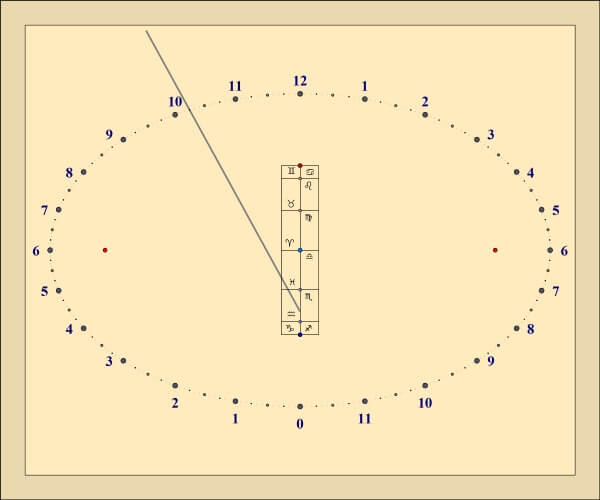
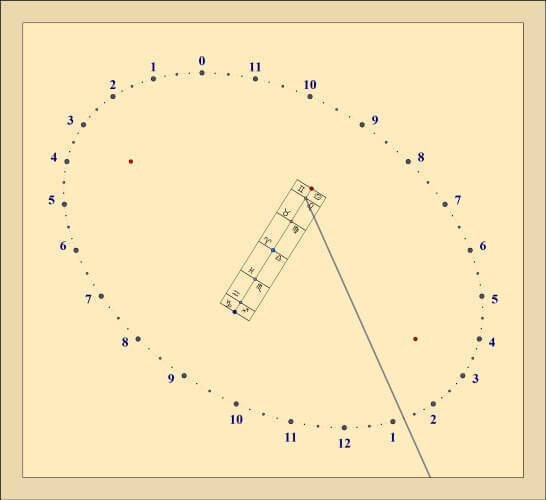
Two analemmatic sundial layouts, for the city of Lisbon (Portugal), drawn with Shadows.
Left: horizontal analemmatic sundial with the shadow of the style drawn for January 30th at 10h15 of solar time.
Right: vertical declining analemmatic sundial, declining by 30° towards East, with the shadow of the style drawn for May 20th, at 13h15 of solar time.
Mobile style and date line
The date line can be scaled with days and months, or with Sun's declination, or with Zodiac signs, as on classical sundials, that correspond to approximately the 21st of each month.
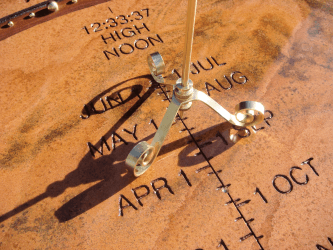




Analemma curve on the date line
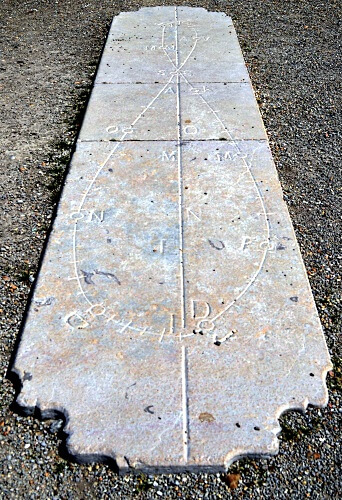
The famous analemmatic sundial of Brou, displays the 8-shape analemma curve on its date line. This feature aims at helping users to find the position of the style thanks to a scale in dates every five days and the months initials.
But many users think that by positioning the style on the analemma curve, instead of the central date line, it would compensate for the equation of time, and convert solar time to civil time. Unfortunately, this is wrong!
The style must be placed exactly on the central line, somewhere in between the two solstices at a position depending on the date or Sun's declination.
This is why analemmatic sundials only tell solar time, sometimes corrected from the longitude difference with the reference meridian of the time zone.
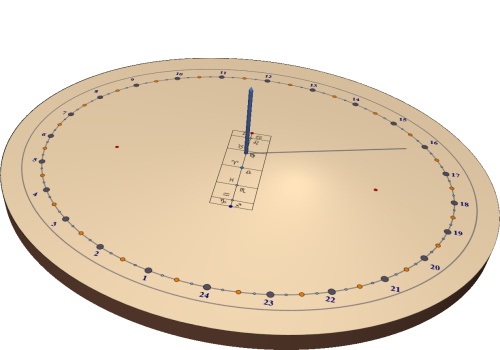
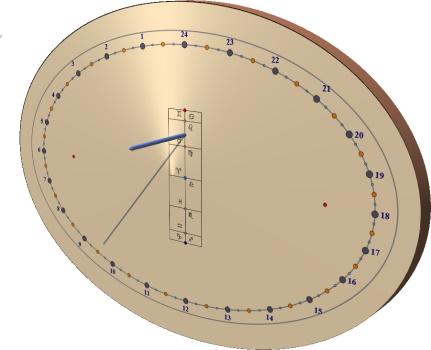
Learn how to design an analemmatic sundial with the Shadows software
Continue with:
- Understanding sundials
- Plane sundials with a polar style
- The bifilar sundial
- Cylindrical sundials
- Photos of sundials
- Sundial makers
- Bibliography on sundials
Photos:
- Montpellier: photo FB
- date line (left): John Carmichael, www.sundialsculptures.com.
- date line (right): analemmatic sundial of the Westminster Abbey in London, photo FB.